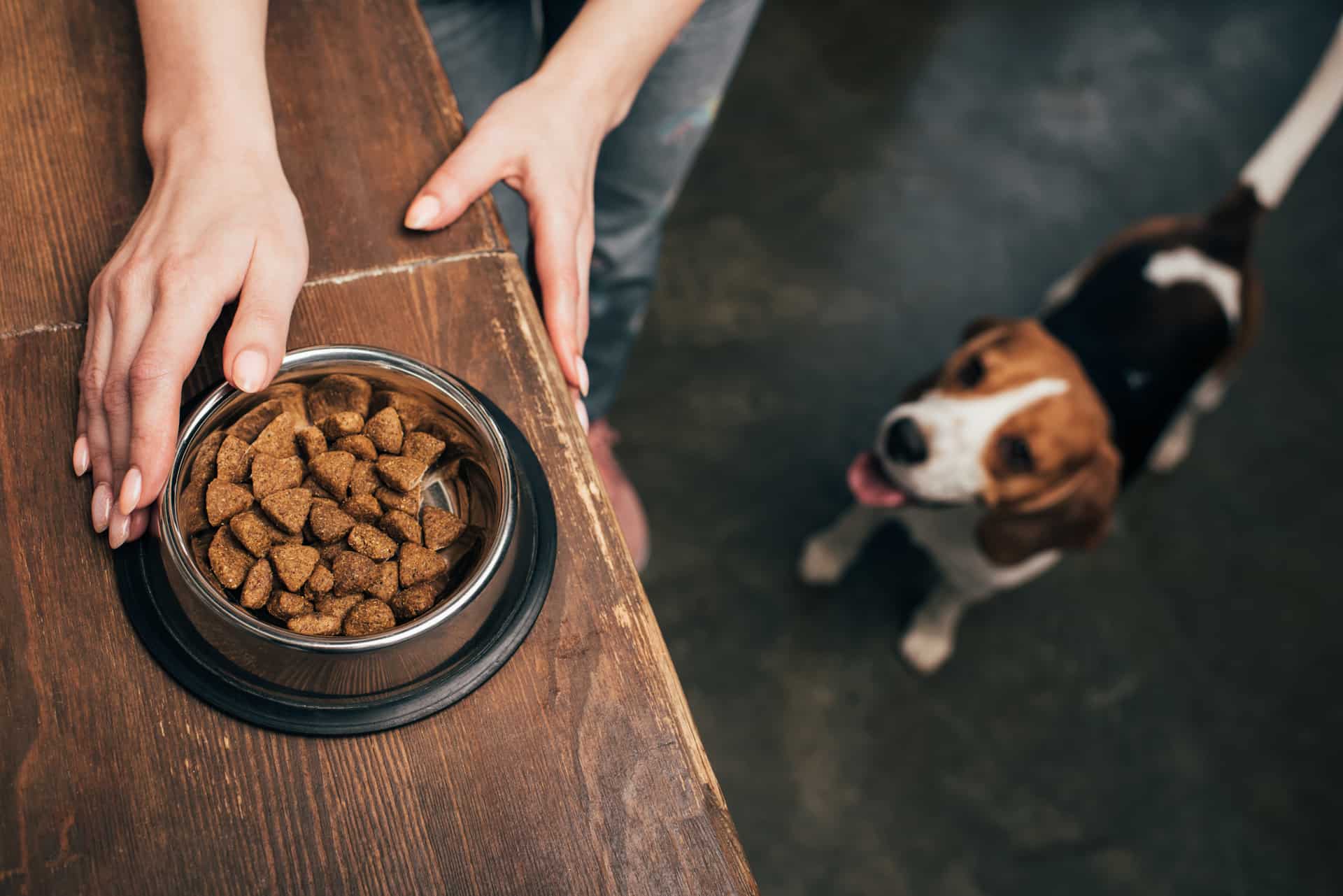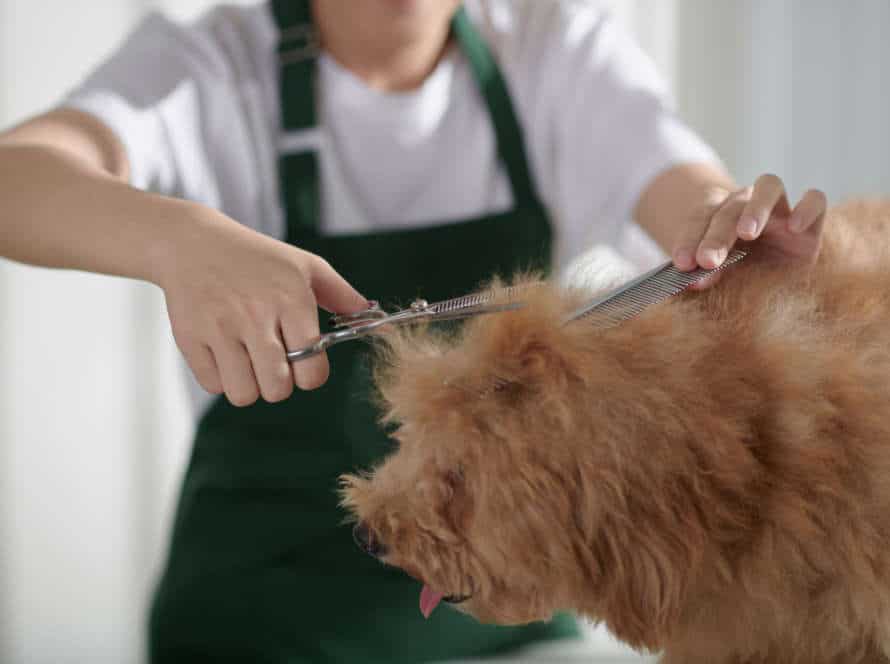Finding the Perfect Dog Food for Your Canine Companion
Finding the right grub for your pooch is key to their healthy and happy life. Here’s how to do it:
- Consider age, size, and activity level. Puppies and bigger breeds have different needs.
- Go for high-quality ingredients, like real meat, veggies, and grains. Avoid fillers like corn, wheat, and soy.
- Read labels. Check the guaranteed analysis, ingredients list, and manufacturer’s info. Check if it meets AAFCO’s nutritional requirements.
- Think about any allergies or special health needs when selecting food. Ask a vet for advice.
- Pro tip: Transition your pup to the new food gradually to prevent tummy troubles.
Types of Dog Food
Finding the right food for your pup? There are loads of options! Each type of dog food is unique – with its own nutritional value, ingredients and flavors. Make sure you know the different types, to ensure your pooch gets the best nutrition.
Let’s explore the different kinds of dog food – helping you select the best for your furry friend.
Dry (kibble) Dog Food
Dry dog food is a practical way to feed all breeds and sizes of dogs. It’s convenient, easy to store, and comes in tons of flavors and formulations.
Here are some types of dry dog food to consider:
- Grain-free: Good for pups with allergies, sensitivities, or digestive issues.
- Limited ingredient: Simple recipe with a few ingredients, which is great for dogs with allergies or sensitivities.
- High-protein: Great for active dogs or those with high energy needs.
- Senior: Formulated with ingredients to meet the unique nutritional needs of aging dogs.
By considering these options, you can find the ideal food for your pup!
Wet (canned) Dog Food
Wet dog food is a great choice for pet owners who want to give their four-legged friends good quality, nourishing meals. It has up to 75% water and is excellent for hydration, specially for doggos that don’t drink too much water.
There are several kinds of wet dog food accessible in the market:
- Canned food – the most popular type of wet dog food. It has an amazing taste and nutrition.
- Homemade food – some pet owners choose to make their own wet dog food. This way, they can keep control over their pup’s diet.
- Pouches – busy pet owners find these very handy. They come in single-serving sizes, great for trips.
- Rolls – these are quite cheap and have a long shelf life..
It’s important to pick a top-notch wet dog food suitable for your doggo’s age, size and dietary needs. Talk to your vet to know what’s best for your pooch. Tip: Make any changes to your pup’s diet gradually and watch for any unwanted reactions.
Semi-moist Dog Food
Semi-moist dog food is a type of food that has more moisture than dry kibble but less than wet canned food. It usually comes in small pieces that are easy to chew and digest. Here are a few points to remember when thinking about semi-moist dog food:
- Quality ingredients – Look for brands that use good meats, fruits, and vegetables and avoid those with artificial preservatives, colors, or flavors.
- Portion control – Semi-moist dog food usually has more calories and sugar than dry kibble, so feed your pet the right portion sizes to avoid weight gain or other health issues.
- Storage – Semi-moist dog food needs to be stored in a cool, dry place to stay fresh.
- Variety – While semi-moist dog food can be great occasionally, it shouldn’t be the only food your pet eats. Variety is essential for making sure your dog gets all the necessary nutrients.
Ingredients to Look for in Dog Food
Searching for the perfect food for your pup can be daunting. Pay attention to the ingredients when choosing a food. Knowing which ingredients to look for is key to guaranteeing your pup gets the best nutrition. Here’s what to watch out for in dog food:
Protein Sources
Protein is key for your pup’s wellbeing. Pick high-grade sources for their diet. Here’s the top proteins to look for in dog food:
- Chicken: Lean protein, great for dogs with allergies to red meat.
- Beef: Tasty, nutrient-filled protein for active dogs needing many calories.
- Fish: Loaded with omega-3 fatty acids and perfect for skin allergy and joint issues.
- Lamb: Novel protein source, great for pups with allergies to more common proteins.
- Eggs: Complete protein, a must for all dogs from little puppies to grown-ups.
When choosing dog food, check the ingredients list. Make sure the protein sources are top-notch and meet your pup’s nutritional needs.
Carbohydrates Sources
Owning a pooch? You must feed ’em a balanced diet. What’s crucial is to get the right kind of dog food with the right carbs. Here’s a list:
- Brown rice for energy and fiber.
- Sweet potatoes for vitamins and minerals.
- Oatmeal for soluble fiber.
- Lentils for plant-based protein, fiber, and other nutrients.
- Peas for more protein, fiber, and vitamins and minerals.
When buying, read the label carefully. Look for high-quality, whole-food carbs.
Healthy Fats
When it comes to dog food, it’s important to include healthy fats. These provide essential nutrients and support a pup’s wellbeing.
Fish oil is a great option. It has omega-3 fatty acids – reducing inflammation, aiding brain and eye development, and improving skin and coat health.
Flaxseed is a plant-based source of omega-3s too. It supports heart health, reduces inflammation, and helps with skin and coat.
Chicken fat is a tasty source of omega-6 fatty acids, great for skin and coat health.
Canola oil is a source of unsaturated fats – good for heart health and providing essential nutrients.
Include these healthy fats in your pup’s diet. This will help them to live a long, healthy life.
Vitamins and Minerals
Vitamins & minerals are a must for your pup’s diet! They provide essential nutrients, keeping them in optimal health. Vitamins include A, D, E, K, C & B complex. Minerals include calcium, phosphorus, sodium, chloride, potassium, magnesium, iron, copper, zinc, iodine & selenium.
Choose a high-quality dog food with a balanced & complete blend of vitamins & minerals suited for their life stage & breed. This will ensure they lead a happy, healthy life!
Ingredients to Avoid in Dog Food
Picking the right dog food for your pup? Know what to watch out for! Certain brands may contain ingredients that are bad for your canine companion’s health. Here’s what to avoid and why: unhealthy ingredients can harm your pup’s wellbeing.
Artificial Preservatives
Stay away from artificial preservatives when selecting the ideal food for your pup. They are put in dog food to give it flavour and make it last longer, but they can affect your pooch’s well-being.
Be wary of these common artificial preservatives in doggy food:
- BHA and BHT: Connected to cancer and other health issues in dogs.
- Ethoxyquin: Banned in human food, yet permitted in canine food. It may cause liver damage and other health problems in dogs.
- Propylene Glycol: Commonly found in dog food, this preservative has been linked to allergic reactions and other medical issues in dogs.
Opt for all-natural or organic dog food with healthier ingredients, instead of those with artificial preservatives. Your pup will thank you!
Artificial Flavors and Colors
Avoid artificial flavors and colors in dog food! These ingredients are added for looks and taste, but have no nutritional value. They can even be dangerous to your dog’s health.
Red Dye 40, Blue Dye 6, and Yellow Dye 5 have been linked to allergic reactions, hyperactivity, and even cancer in dogs.
Artificial flavors, while usually safe, can hide the true quality of the food. Fake “meat flavoring” or “animal digest” might not be as nutritious as real meat.
Read labels carefully and choose dog food with natural colors and flavors, or better yet, no added colors or flavors at all. Look for brands that use high-quality ingredients and focus on your dog’s health.
Pro tip: Consult your vet to find the best food for your pup’s needs!
Unnamed Meat Sources
Choosing the right food for your pup? You must avoid those with unnamed meat sources! These may include animal digest, by-products and meat meal; which can contain parts like beaks, hooves and bones, not safe for humans.
This type of food can cause health problems for your dog, like digestive issues, allergies, and kidney failure. So, go for a named protein source like chicken, beef or lamb, and make sure that it’s the first listed ingredient.
You can also choose a brand that uses whole meats or human-grade ingredients, and avoid those with artificial preservatives, colors and flavors.
Pro tip: Talk to your vet if you have any questions about your pup’s diet.
Meet Your Dog’s Specific Nutritional Needs
Choosing the right food for your pup? Consider their individual needs! Age, activity level, and breed all make a difference. Providing the right nutrition is key for a healthy, happy pup. Let’s take a look at food choices.
Life Stage
It’s essential to know your pup’s life stage when picking the right grub. What they eat depends on their age, breed and activity level.
Puppies need food that’s packed with protein, fat and key nutrients for growth. Look for grub labelled for pups.
Adult pooches need a balanced diet for their daily activities. Grab food appropriate for their activity level and marked ‘for adult dogs‘.
Older doggos require less calories and fat but still need protein and nutrition. Pick grub labelled for senior dogs.
If your dog has health issues or a food allergy, chat to a vet for the best options.
Breed Size
Breed size matters for your pup’s nutrition. Small dogs have faster metabolisms, so they need nutrient-dense diets with higher energy levels. Medium breeds need balanced diets with moderate fat and protein levels. Large breeds require low-calorie diets with moderate protein and fat levels. Giant breeds need diets with high protein levels and moderate fat levels. Knowing your pup’s breed size and nutritional needs helps you choose the perfect food for them.
Activity Level
Knowing your pup’s activity level is vital for finding the ideal dog food for their exact nutritional requirements. Here’s a breakdown of the four main activity levels of dogs and the kind of dog food that best suits them:
- Sedentary: For older dogs, those with medical conditions, or those who just prefer being lazy, a low calorie and low-fat dog food is ideal. Look for one high in protein to maintain muscle mass.
- Moderate: Short walks or occasional play? A balanced diet of protein, fats, and carbs should do the trick.
- Active: Those furballs who love to run and play need a high protein dog food, packed with carbs to give them energy for their active lifestyle.
- Athlete: Dogs that get a lot of exercise, such as agility or working dogs, require a high protein and high-fat dog food to keep their energy levels and body condition up as they exercise.
Reading Dog Food Labels
Grasping the elements on dog food labels is vital for supplying your pet pooch the top-notch nourishment. Every label needs to feature:
- A statement of identity
- The ingredients list
- The guaranteed analysis
This is according to the Dog Food Nutrient Profile, which was set up by the Association of American Feed Control Officials. Let’s check out each one!
Guaranteed Analysis
Reading dog food labels is key to make sure your pup eats a balanced diet. When shopping around, look out for the “Guaranteed Analysis” on the label. This shows the percent of crude protein, fat, fiber and moisture in the food. Crude protein is from meat or plant sources. Fat provides nutrients and energy. Fiber helps with digestion. Moisture affects shelf life and taste. Pay attention to the Guaranteed Analysis for the best food for your pup’s nutrition and taste.
Ingredient List
When buying dog food, it’s vital to understand the ingredient list. Here are some tips:
- Look for a named protein as the primary ingredient. For example, chicken, beef or salmon. Avoid “animal” or “meat” meal.
- Avoid artificial colors and flavors. Go for natural ingredients, such as fruits, vegetables or herbs.
- Steer clear of fillers like corn, wheat and soy. Opt for natural fibers like brown rice, sweet potatoes, and barley.
Reading the ingredient list is essential for finding the ideal dog food. It will guarantee your pup gets the best nutrition possible.
Feeding Instructions
Feeding your pup a balanced and nutritious diet is vital for its health. To make sure your dog is getting the correct nutrients, you must read labels and follow directions carefully. Here are some tips to remember:
- Check the first few ingredients listed on the label. They should be a high-quality source of protein, such as chicken, fish, or beef.
- Look for whole food ingredients like fruits and veggies, which provide vital vitamins and minerals.
- Make sure the dog food meets AAFCO standards.
- Follow the feeding instructions listed on the label, based on your pet’s weight and activity level.
- It’s essential to consult with your vet before making changes to the diet. They can provide personalized advice based on your dog’s needs.
Choosing the Right Dog Food
Finding food for your pup? Don’t settle for just any dog food. Not all are created equal. Knowing what ingredients are in the food you choose is key. Here’s a guide to help you find the perfect food for your pet. It covers the basics of what to look for, giving advice for the perfect pup meal.
Consult with Your Veterinarian
When picking dog food for your pup, consult your vet. They can assist you to spot your pup’s special nutritional needs and recommend a diet that fits those needs. Why? Here’s why:
- Different breeds have diverse nutritional needs. A Chihuahua may need different levels of protein than a Great Dane. Your vet can help you decide what’s best for your pup’s breed.
- If your pup has any health issues, like obesity, allergies, or diabetes, they may need a special diet. A vet can help you find the right food to keep your pet healthy.
- Puppies, adult dogs, and seniors all have different dietary needs. A vet can help choose dog food that’s perfect for your pup’s age and health.
If you want your furry friend to eat healthy, talk to your vet. Don’t hesitate!
Understand Your Budget
When selecting the right dog food, your budget is essential. Investing in good quality food may give your pup long-term health advantages. Finding the right mix of quality and cost is important. Here’s how to understand your budget and pick the perfect dog food:
- Determine how much you can spend each month.
- Think about your pup’s age, breed, activity level, and any particular dietary restrictions.
- Seek out high-quality dog food brands that match your budget and pooch’s nutritional needs.
- Look at the ingredients list carefully to check if the food has high-quality proteins, whole grains, and healthy fats.
- Look into buying dog food in bulk or subscribing to a delivery service for future savings.
- Bear in mind that investing in high-quality dog food may save you cash on vet bills.
Consider Your Dog’s Preferences
Choosing the right food for your pup is key. Nutrition and ingredients are important, yet your pup won’t eat if it doesn’t taste good. Here’s how to pick food based on their preferences:
- Spot their fav flavors: Watch what they love to eat and pick the food with those tastes and smells.
- Check the texture: Some like softer, moister food, while others like dry kibble. Find their fav.
- Note any allergies or intolerances: Is your pup allergic to certain ingredients? Avoid them.
- Follow your vet’s advice: Your vet knows your pup’s needs. Consider their recommendations.
Pro Tip: Mix in veggies and brown rice with your pup’s kibble for a nutrient-packed meal.
Frequently Asked Questions
Q: What should I look for when choosing a dog food for my pet?
A: When searching for the perfect dog food, look for one that includes high-quality ingredients, meets your dog’s nutritional needs, and is free from harmful additives and fillers.
Q: What are the most important nutrients my dog needs in their food?
A: Dogs need a balanced diet of protein, fats, carbohydrates, vitamins, and minerals. Look for foods that contain these nutrients, and consult your veterinarian for guidance.
Q: Should I buy grain-free dog food?
A: Grain-free dog food may be beneficial for dogs that have specific dietary needs or allergies. However, there is no clear evidence that grain-free foods are better for dogs overall.
Q: How often should I switch up my dog’s food?
A: Dogs can benefit from a varied diet, so it’s a good idea to switch up their food occasionally. However, sudden changes in diet can lead to digestive upset, so make any changes gradually over time.
Q: Can I make my own dog food at home?
A: Yes, it is possible to make your own dog food at home, but it is important to ensure that it meets your dog’s nutritional needs. Consult with a professional to create a balanced recipe and ensure that your dog is getting all of the necessary nutrients.
Q: What are some common food allergens in dog food?
A: Common food allergens in dog food include chicken, beef, dairy, and wheat. If your dog has a food allergy or sensitivity, it may be necessary to switch to a specialized diet that avoids these ingredients.







